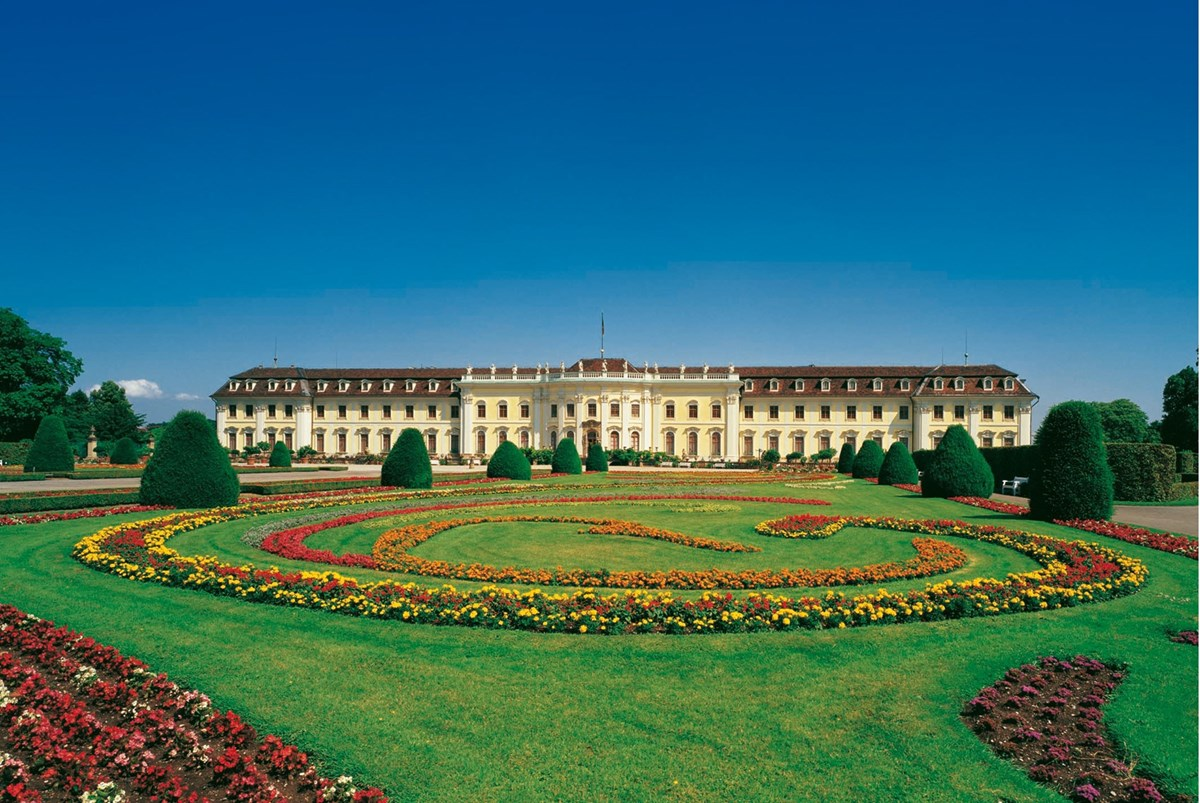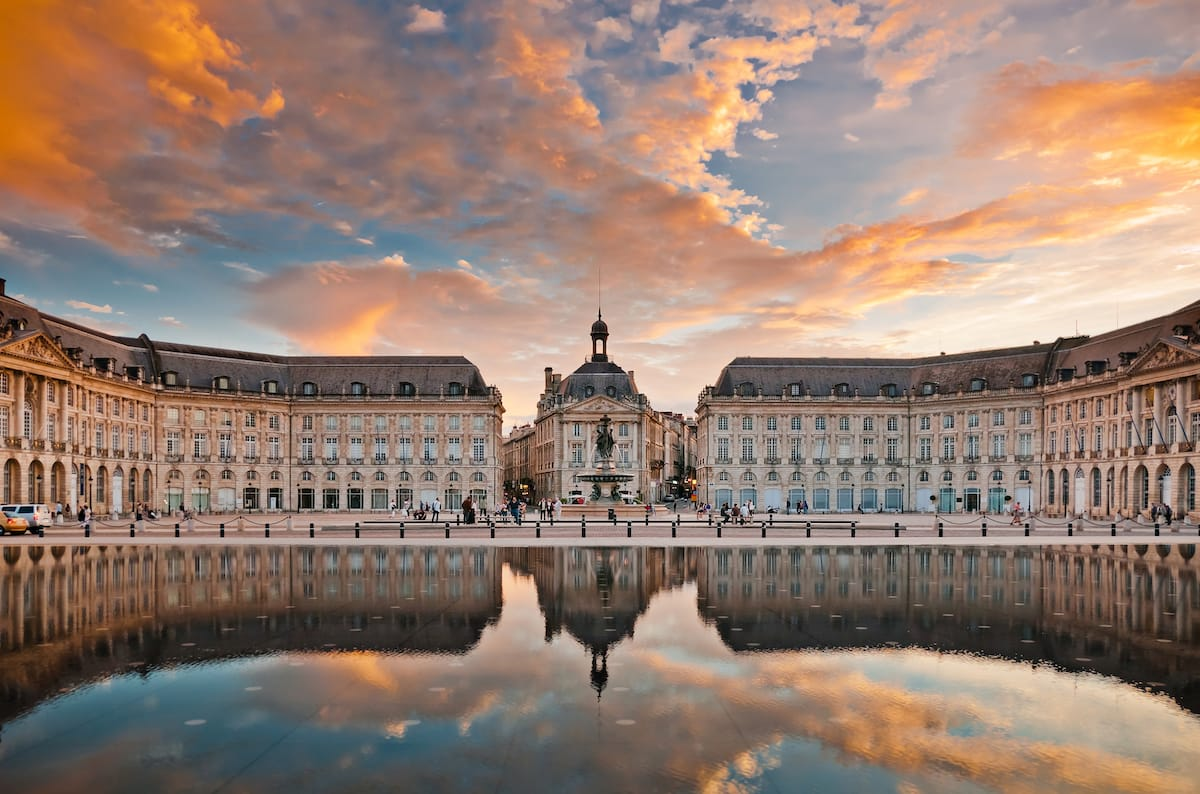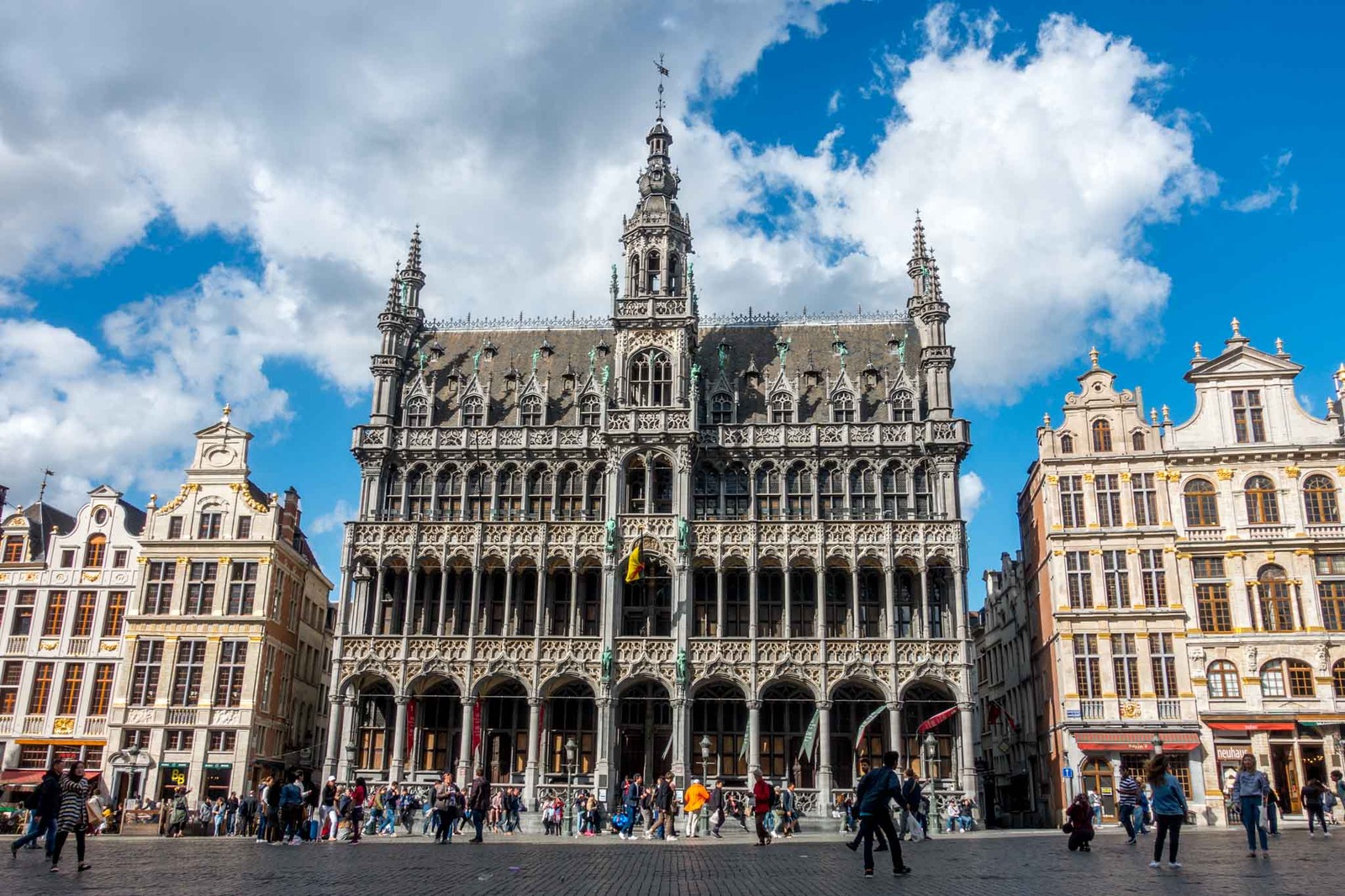Nestled in the Neckar River valley, Stuttgart offers the perfect combination of urban energy and natural beauty. Baden-Württemberg’s capital city is famed for its engineering legacy as home to Mercedes-Benz and Porsche. But Stuttgart also impresses visitors with its green landscapes, cultural sights, historic palaces and charming wine villages within easy reach.
| No. | Activity | Description |
|---|---|---|
| 1 | Mercedes-Benz Museum | Futuristic museum showcasing Mercedes-Benz’s history and cars. |
| 2 | Schlossgarten | Central park for strolling and relaxation. |
| 3 | Fernsehturm Stuttgart Tower | Tower offering panoramic city views. |
| 4 | Old Town | Historic area with market squares and cobbled lanes. |
| 5 | Ludwigsburg Residential Palace | Germany’s largest Baroque palace complex. |
| 6 | Stuttgart State Opera | Leading opera house with world-class performances. |
| 7 | Weinstube | Traditional wine pubs serving local wines and classic dishes. |
| 8 | Grabkapelle Rotenberg | Gothic chapel on a vineyard-clad hill. |
| 9 | Vineyards | Bike rides and wine tasting through local vineyards. |
| 10 | Porsche Museum | Showcases Porsche’s sporting heritage. |
| 11 | Hiking | Trails through hills and vineyards. |
| 12 | Day Trip to Tübingen | Visit to the medieval town on the Neckar River. |
| 13 | Markets at Marktplatz | Open-air markets selling regional goods. |
| 14 | Modern Architecture | Contemporary architecture including Mercedes-Benz Museum. |
| 15 | VfB Stuttgart Football | Cheer on the local Bundesliga football team. |
As you plan your 2024 travels, be sure to include these top 15 attractions and activities for an amazing Stuttgart experience.
Marvel at the Mercedes-Benz Museum

Mercedes-Benz Museum – Located in Stuttgart, Germany
History and Significance: This museum covers the history of Mercedes-Benz automobiles through extensive exhibits displayed in an avant-garde spiral building. Mercedes-Benz originated in Stuttgart in the late 19th century.
What to Expect: Visitors can view over 160 vehicles and 1500 exhibits about the brand’s engineering, design, and innovation. Interactive multimedia displays, simulators, and historic films deepen the experience.
Visitor Information: The museum is open Tuesday-Sunday 9am-6pm. Admission is €10, discounts available online. Headsets provide audio guides in multiple languages. Guided tours can be booked.
Even if you’re not a car enthusiast, this futuristic museum provides an enlightening look at Mercedes-Benz’s innovation and influence. See over 160 vehicles range from the earliest models to visionary concept cars. Highlights include the patent first automobile from 1886 and exhibits spotlighting design evolution. Be awed by the showroom displaying the latest Mercedes models.
Stroll Through the Schlossgarten

Schlossgarten – Located in Stuttgart, Germany
History and Significance: The Schlossgarten is a central city park that contains botanical gardens, theaters, lakes, fountains and monuments. Once royal gardens, they provide green space in Stuttgart since the early 19th century.
What to Expect: Visitors can stroll through diverse gardens showcasing roses, camellias, and exotic plants. Paths and lawns allow lounging and walking. A pond, waterfall, and auditorium for events add interest.
Visitor Information: The gardens are open year-round and free to access. Fountains operate April-October. On summer weekends, live music and events take place. The park is located next to the Neues Schloss palace.
Stuttgart’s central Schlossgarten park provides a verdant and peaceful escape for strolling or just relaxing on the grass. Paths weave through flowerbeds, fountains and sculptures with the city’s landmarks bordering the grounds. Don’t miss seeing the glassy modern Neues Schloss New Palace. Enjoy coffee at the lakeside cafe or pack a picnic.
Climb the Fernsehturm Stuttgart Tower

Fernsehturm Stuttgart – Located in Stuttgart, Germany
History and Significance: The Fernsehturm Stuttgart is a 217 meter tall telecommunications tower completed in 1956, making it the first telecom tower in the world. The unique concrete spire provides views over Stuttgart.
What to Expect: Visitors can ride an elevator up 165 meters to an observation deck and restaurant for panoramic vistas of Stuttgart and the surrounding countryside. Interactive displays provide information.
Visitor Information: The tower is open daily 9am-midnight, entry is €7.50. The tower closes during bad weather. Guided tours of the tower interior are available but must be booked in advance.
For incredible views over Stuttgart and the surrounding countryside, ascend the 712-foot Fernsehturm Stuttgart tower. Europe’s first TV tower built in 1950 features an observation deck, rotating restaurant and even a cocktail lounge for soaking in the panoramas and city lights over a drink. The tower’s unique mustard-yellow color makes it easy to spot from all over the city.
Wander Through the Old Town

Old Town – Located in Stuttgart, Germany
History and Significance: Stuttgart’s Old Town features restored Medieval and Baroque architecture along winding streets and plazas. Major sights include the Altes Schloss palace, Stiftskirche church, and Markthalle market hall.
What to Expect: Visitors can explore historic lanes lined with shops, restaurants, galleries, and half-timbered buildings. The stone Markthalle has food stalls and craft vendors. Museums, churches, and the palace provide historic interest.
Visitor Information: The Old Town is compact and walkable. Guided walking tours are available through the tourist office. Markthalle is open daily except Sunday. Altes Schloss offers tours for a fee.
With its market squares, cobbled lanes and historic buildings, Stuttgart’s pedestrianized Old Town is perfect for aimless wandering. Top sights here include the 15th-century Old Castle, the Collegiate Church and lovely Renaissance inner courtyards. Stop into gemütlich cafés and beer gardens tucked within the charming Baroque and Rococo architecture along the way.
See the Ludwigsburg Residential Palace

Ludwigsburg Residential Palace – Located near Stuttgart, Germany
History and Significance: Considered Germany’s largest Baroque palace complex, this 18th century palace has 452 opulent rooms, ornate gardens, and the Blühendes Barock floral displays. It served as a royal residence until 1918.
What to Expect: Visitors can tour the lavish interior rooms and exhibitions of art, furniture, and artifacts. The gardens, fountains, and floral designs provide outdoor enjoyment. There are several dining options on site.
Visitor Information: The palace is a 10 minute train ride from Stuttgart. It’s open daily 9am-5pm, entry is around €7. Guided tours and audio guides are extra. The gardens have seasonal hours.
Just north of Stuttgart lies the grand 18th century Ludwigsburg Palace, Germany’s largest Baroque palace complex. Tour the lavish royal apartments and opulent staterooms with frescoed ceilings and intricate stucco. Don’t miss the palace theater, gardens, fountains and its Separate Museums exhibiting antiquities, portraits, porcelain and carriages. Come for the daily concerts performed in period costume.
Catch a Show at Stuttgart State Opera

Stuttgart State Opera – Located in Stuttgart, Germany
History and Significance: The Stuttgart State Opera is one of Germany’s leading opera houses. Opened in 1912, the grand opera house stages over 300 performances each year across a range of classical genres.
What to Expect: Visitors can attend world-class opera, ballet, classical concerts, and musical theater productions in an elegant, horseshoe-shaped hall. Backstage tours allow seeing behind the scenes.
Visitor Information: Performance times vary by season and show. Tickets start around €10 and can be purchased online, by phone, or at the box office. Guided tours run Saturdays and Sundays. Evening attire is recommended.
Housed in a 1912 Neoclassical building, the Stuttgart State Opera is one of Germany’s leading opera houses. Attend an elegant performance and you may catch productions conducted by the Staatsorchester Stuttgart, one of the world’s best orchestras. Even if not seeing a show, take time to admire the Opera House’s grand arched entrance, sweeping staircase and frescoed ceilings.
Sip Local Wines at a Weinstube

Weinstube – Located in Stuttgart, Germany
History and Significance: Weinstubes are cozy wine taverns that serve local vintages alongside regional food. They have a tradition in Stuttgart and the Swabia region dating back centuries as communal gathering places.
What to Expect: Visitors can sample wines like Trollinger, Schwarzriesling, and Lemberger alongside Swabian dishes like Maultaschen, sausage, and pretzels in a charming traditional setting. The atmosphere is laid-back and communal.
Visitor Information: Weinstubes can be found in Stuttgart’s Old Town. Prices are reasonable, around €25 per person for shared dishes and wines. Reservations are recommended for evenings and weekends to secure a table.
Sample some of Germany’s finest Rieslings and Spätburgunders at one of Stuttgart’s traditional weinstubes or wine pubs. These cozy taverns like Weinhaus Stetter and Alte Kanzlei pour wines from local producers, along with classic dishes like spätzle and schnitzel to perfectly accompany your glass. It’s a fun way to experience Stuttgart’s wine culture.
Explore the Grabkapelle Rotenberg

Grabkapelle Rotenberg – Located near Stuttgart, Germany
History and Significance: This small chapel was built in 1515 in Late Gothic style atop the scenic Rotenberg hill. Its picturesque design and hillside setting make it a popular photo subject. An old vineyard surrounds the chapel site.
What to Expect: Visitors can tour the tiny chapel, often described as a hidden gem just outside Stuttgart. Panoramic views of vineyards and the countryside surround the chapel. A restaurant next door is good for sampling Swabian food and wine.
Visitor Information: The chapel is a 20-minute drive from Stuttgart near Kornwestheim. No entry fee. Open daily from 9am-dusk. Limited parking at the hilltop site.
Built atop a vineyard-cloaked hill, the 15th century Rotenberg Chapel provides beautiful outlooks over Stuttgart’s rooftops. The half-timbered Gothic church contains well-preserved medieval frescoes and intricate carvings. Climb the bell tower for even more impressive views. After visiting, relax with a glass of Rotenberg wine at the charming Besenwirtschaft vineyard tavern next door.
Pedal Through the Vineyards

Vineyard Bike Tours – Offered from Stuttgart, Germany
History and Significance: Bike tours through the vineyards surrounding Stuttgart provide a scenic way to see the hilly wine country that produces many of Germany’s distinctive white wines. Guides explain the region’s wine heritage.
What to Expect: Typical vineyard tours cover 15-30 miles over 4-5 hours. Riders bike through vineyards and villages, stopping for wine tastings, cellar tours, and lunch. Guests can choose the pace and difficulty. E-bikes are available.
Visitor Information: Tours depart from Stuttgart daily April-October and cost €50-100 per person including bike rental, food, and tastings. Advance booking through local tour companies is required, especially for groups.
Stuttgart is surrounded by vineyards, making it easy to combine a bike ride with wine tasting. Well-marked bike trails lead from the city center through the vines and valleys. Along the way, stop at weinstubes like Warmbronner Hof and Schlickenrieder for crisp Rieslings with lake views. Guided e-bike vineyard tours are another good option to cover more ground. ¡Salud!
See the Porsche Museum

Porsche Museum – Located in Stuttgart, Germany
History and Significance: The Porsche Museum showcases the sports car company’s history through over 80 vehicles and interactive exhibits. Porsche has been headquartered in Stuttgart since 1931 and is an iconic German brand.
What to Expect: Guests can view an extensive collection of rare vintage Porsches plus concept cars, racing vehicles, and contemporary models. Multimedia displays and simulators provide behind-the-scenes perspectives. A restaurant is onsite.
Visitor Information: The museum is open Tuesday-Sunday 9am-6pm. Admission is €10, discounted tickets can be pre-purchased online. Guided tours are available by request for a fee.
This sleek, dynamic museum celebrates Porsche’s sporting heritage by showcasing over 80 vehicles through the decades. Standouts include the iconic 911 model along with early racing cars and experimental prototypes. You can even book to drive high-performance Porsches on the museum’s own track and handling course. The interactive exhibits and simulator are fun for kids too.
Hike Through the Hills

Hiking Trails – Located near Stuttgart, Germany
History and Significance: The hills surrounding Stuttgart contain extensive hiking trails that offer beautiful scenery and outdoor recreation. Trails wind through vineyards, forests, and traditional villages. Many trails are historic pilgrimage or trade routes.
What to Expect: Visitors can hike routes from easy valley walks to challenging uphill climbs with rewarding views. Trails are well-marked but sturdy shoes are recommended. Packing a picnic can provide scenic rest stops.
Visitor Information: Maps and info can be found at Stuttgart’s tourist office. Popular hiking areas include the Swabian Alb, Black Forest, and nearby valleys. Trails can be accessed by car or public transit.
Thanks to Stuttgart’s valley setting surrounded by hills, scenic hiking trails are just minutes from downtown. For skyline views, take the footpath up Birkenkopf hill behind the Fernsehturm tower. Explore woodlands and vineyards on the trails around Uhlbach, Max-Eyth-See lake or Rotenberg chapel. Pack a picnic to enjoy after working up an appetite on the hike.
Day Trip to Tübingen

Tübingen – Located near Stuttgart, Germany
History and Significance: Tübingen is an historic university town on the Neckar River known for its medieval old town, lively student culture, and scenic setting. Important churches, a castle, and half-timbered houses add charm.
What to Expect: Visitors can wander picturesque cobblestone streets, browse bookstores and boutiques, tour historic sites, and ride a boat on the Neckar. Restaurants, pubs, and cafes line the central Markt square.
Visitor Information: Tübingen is a 45-minute train ride from Stuttgart. The old town can be explored on foot. Boat tours, walking tours, and bike rentals are available through the tourist office.
For a charming change of scenery, make the quick trip south to the medieval town of Tübingen on the Neckar River. Must-see sights here include the 15th century Castle Tower, Stiftskirche St. George Collegiate Church and the narrow twisting alleys of the Old Town. Tübingen’s lively university culture adds to the appeal. Don’t leave without grabbing cinnamon-sugar schneeball pastries!
Browse the Markets at Marktplatz

Marktplatz – Located in Stuttgart, Germany
History and Significance: Stuttgart’s Marktplatz is the central market square in the pedestrian old town, surrounded by the Rathaus, churches, historic buildings, and outdoor cafes. A bustling market takes place here several days a week.
What to Expect: Visitors will find vendor stalls selling fresh produce, flowers, baked goods, and craft items. There are also permanent stores and restaurants facing the plaza. The square hosts concerts and events.
Visitor Information: The market runs Monday, Wednesday, Friday and Saturday generally 7am-1pm. The surrounding old town can be explored on foot. Marktplatz is reachable by public transit.
Every Tuesday, Thursday and Saturday, Marktplatz hosts bustling open-air markets perfect for browsing regional goods. Vendors sell fruit, bread, cheese, meats, flowers, wine and seasonal treats from all over Baden-Württemberg. The surrounding half-timbered buildings provide a picturesque backdrop as you shop and nosh on bratwurst from the food stalls. A great taste of local life.
Marvel at Modern Architecture

Modern Architecture – Located in Stuttgart, Germany
History and Significance: Stuttgart is known for its contemporary architecture, including the Weissenhof Estate, Stuttgart Airport, Porsche Museum, and Mercedes Benz Museum, featuring the work of noted modern architects.
What to Expect: Visitors can appreciate the clean lines, glass, steel, and concrete designs found across Stuttgart. Notable structures utilize functionality and minimalism to create innovative forms. Guided tours are available.
Visitor Information: Many modern architectural highlights can be reached using the public transit system. Guided tours can be booked through the tourist office or independently online.
From the cutting-edge Mercedes Benz-Museum, striking TV Tower and glassy public library to the avant-garde Vitra Design Museum and Porsche Museum, Stuttgart showcases many icons of contemporary architecture. Standouts include buildings designed by Pritzker Prize winners like Stirling, Meier, Piano and Gehry. Architecture walking tours are a great way to take it all in.
Cheer on VfB Stuttgart Football

VfB Stuttgart Football – Located in Stuttgart, Germany
History and Significance: VfB Stuttgart is the city’s professional football (soccer) club, one of Germany’s top Bundesliga teams. They play at Mercedes-Benz Arena, drawing devoted local fans. The club has over 60,000 members.
What to Expect: Attending a match allows visitors to experience the lively spectator sport with passionate fans cheering, singing, and displaying choreographed tifos. Stuttgart rivalry against FC Bayern Munich matches provide high energy.
Visitor Information: Tickets can be purchased through the team’s website or box office, prices vary. The schedule runs August-May, mostly weekends. Public transit provides easy stadium access.
VfB Stuttgart is the city’s beloved local Bundesliga football (soccer) team established in 1893. Their home games at Mercedes-Benz Arena promise an electric atmosphere as fans cheer and wave flags. Tickets aren’t too difficult to get hold of for a memorable experience. Stop by the team museum at the stadium to peruse trophies and historic gear. Soccer matches provide a real taste of local passion.
Conclusion
With its beautiful natural setting, fascinating museums, regal palaces, quaint wine villages and modern energy, Stuttgart appeals to many different travelers. Savoring a hearty meal in an old weinstube or admiring the sleek lines of a handcrafted Porsche provides glimpses into what makes this city special. When planning your 2024 Germany itinerary, save ample time to experience both Stuttgart’s urban pleasures and pastoral landscapes. From beer gardens to Baroque gardens, Stuttgart’s multifaceted charms are sure to captivate.





Join the Conversation